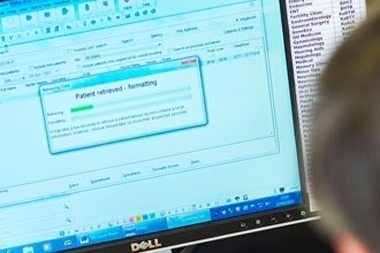How a virtual PPG helped engage more patients with our practice

The problem
I wanted to find a place where patients could ask questions and give feedback and discuss their experiences of the practice, but I also wanted a place for those involved in running PPGs, including practice managers, to be able to share best practice, which was difficult within the traditional PPG structure. We were also struggling to attract patients to practice events so I decided that instead of waiting for patients to go to us, we would go out to them via social media.
What we did
After much deliberation, we decided to give a virtual PPG a go and see if we could increase our interaction and improve overall communication with patients. It costs £125 per year for the practice and is free for the patients to use.
The virtual PPG that we use works much like any other forum that people are used to using. Patients can post messages and comments and make positive and constructive suggestions about the surgery. Practices can respond to comments and other patients can join in the discussion too, creating a fully interactive forum. Practices have full control over the content and can edit and delete posts at any time, ensuring that it’s not a complaints board for patients. We can also quickly add polls and questionnaires to the forum. Using this handy function, we can hold quick straw polls about potential changes to services or the introduction of new ideas. Details of new polls can be emailed to members and a monthly digest of the forum, including any new threads, posts and polls is also sent out.
After the PPG had got used to the software, the practice sent an SMS to patients asking if they wanted to belong to the virtual PPG. If they did they were asked to give the practice permission to use their email addresses, which allows the PPG committee to ask the practice to send an email on their behalf to the virtual PPG where we can pass on information about joining a private forum just for our patients.
Challenges
It has taken longer than I thought it would to get everyone, from the PPG committee members to the practice staff, to realise that communicating online is a good idea. Initially some of the committee didn’t want to use any social media with patients because they thought that the older patients wouldn’t want to use it. But it turns out we have a lot of silver surfers in our practice.
It was also a learning curve for those involved – once we got to grips with what a Read Code was and the fact that there was one for PPGs to show on the main practice database those patients that had given permission to be contacted, it was clear we had a useful way of communicating directly with patients.
Results
We now have over 30 people that have allowed the practice to contact them, compared to a handful of people who previously attended PPG meetings. We are hoping that as time goes on more and more will join in. We regularly tweet messages from the practice, we put up blog posts, and we recently started a Facebook page. Overall there’s now much more interaction between us and patients via the virtual PPG than we could ever achieve by simply using an email list. There’s a world of difference between them.
One of the first practical changes that came out of the virtual PPG was about what we can put in the waiting room. Our practice manager had got rid of all the toys and books, citing infection control, but the patients, especially those with young children, kept asking for them back every time we approached them to get feedback.
Our virtual PPG provider offers a handy PPG-specific forum where I asked for advice on the topic. After receiving a variety of answers, someone replied that they had found a statement from the Health and Safety Executive, prepared in conjunction with NHSE, which outlined why we can have toys in the waiting room, and why it is that people think we can’t.
With the information I got from the forum I was able to go to the practice manager and assure him that it was okay, then the PPG sourced some washable building blocks and a few other things, alongside some books for young children as well as something for the 10-12 year olds too. The PPG is also now in charge of keeping the magazines for adults tidy and up to date. The feedback from the patients and the staff has been good and we now have a more pleasant waiting room that requires less work for the staff.
Future
We are planning to spend the next year slowly getting the idea across that social media can be a real help in getting instant feedback from patients. Annual surveys, by the time they are written, distributed, analysed and reported back, are out of date. Getting feedback via social media means the PPG committee can get contemporaneous feedback, but also get important information out to the patients to help educate them about how the practice works and how to take care of their health.
Jennifer Skillen, chair of the PPG at Romney House Surgery.
The virtual PPG platform referred to above is supplied by myPPG, who had no input into the copy.









